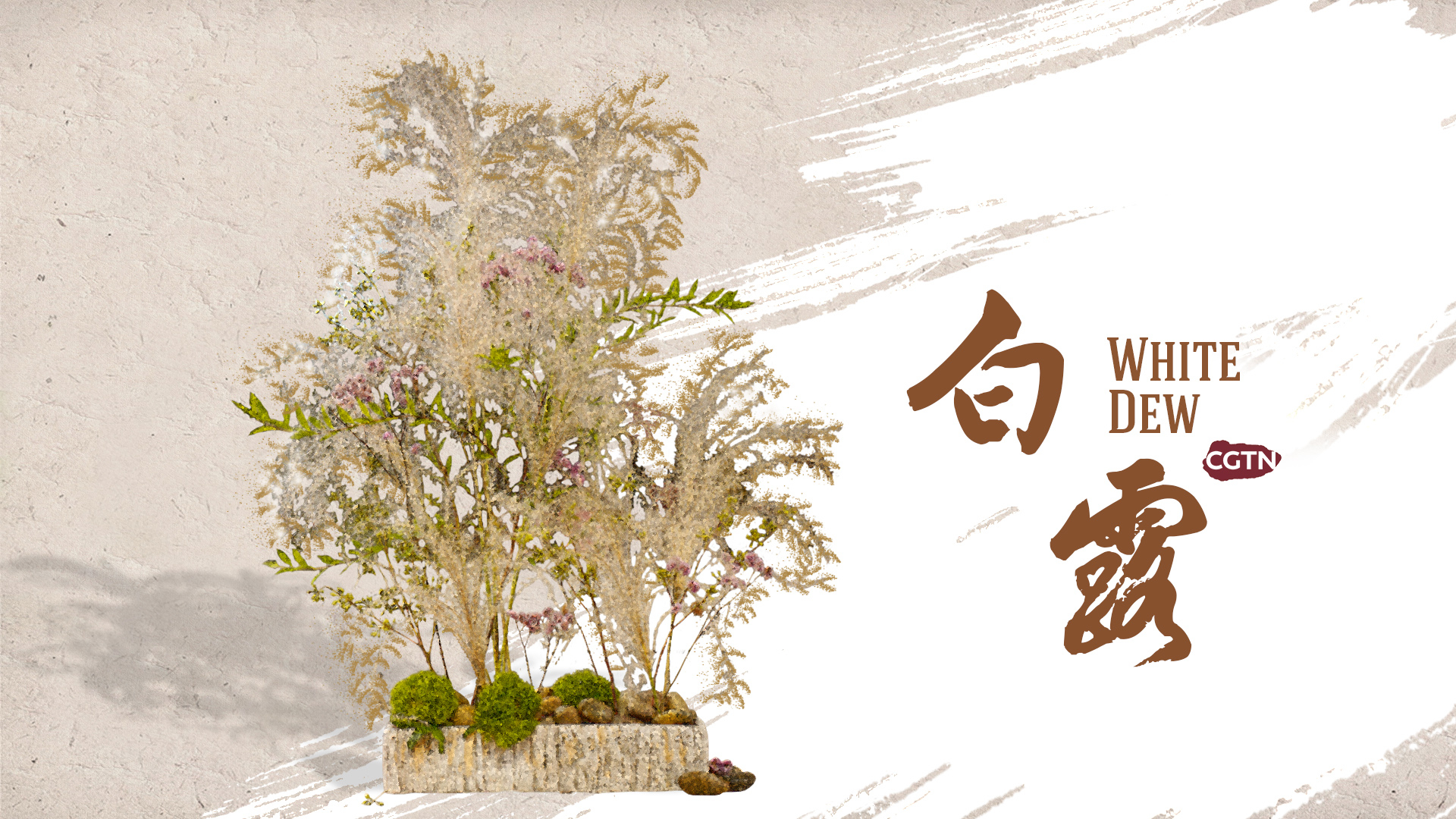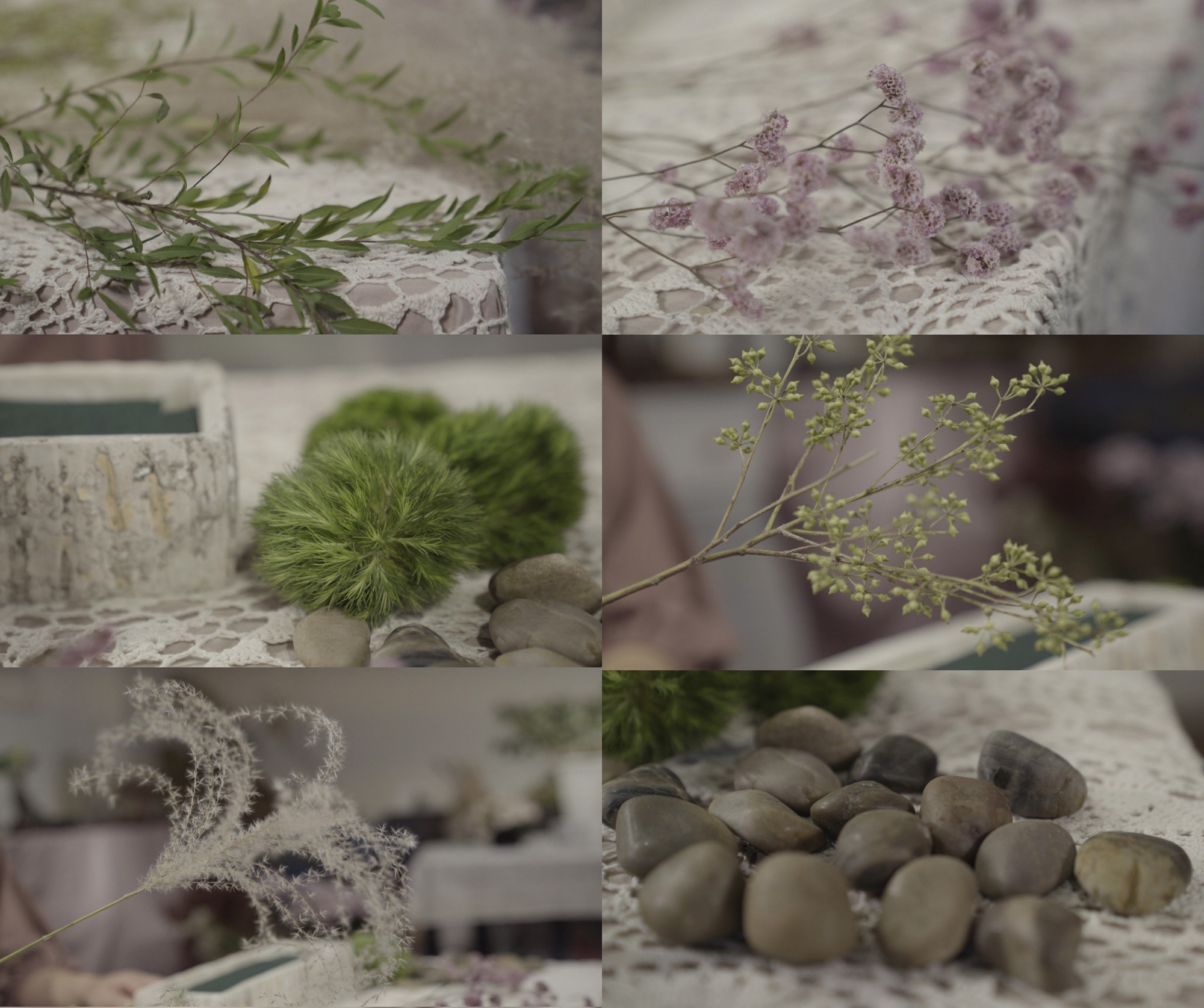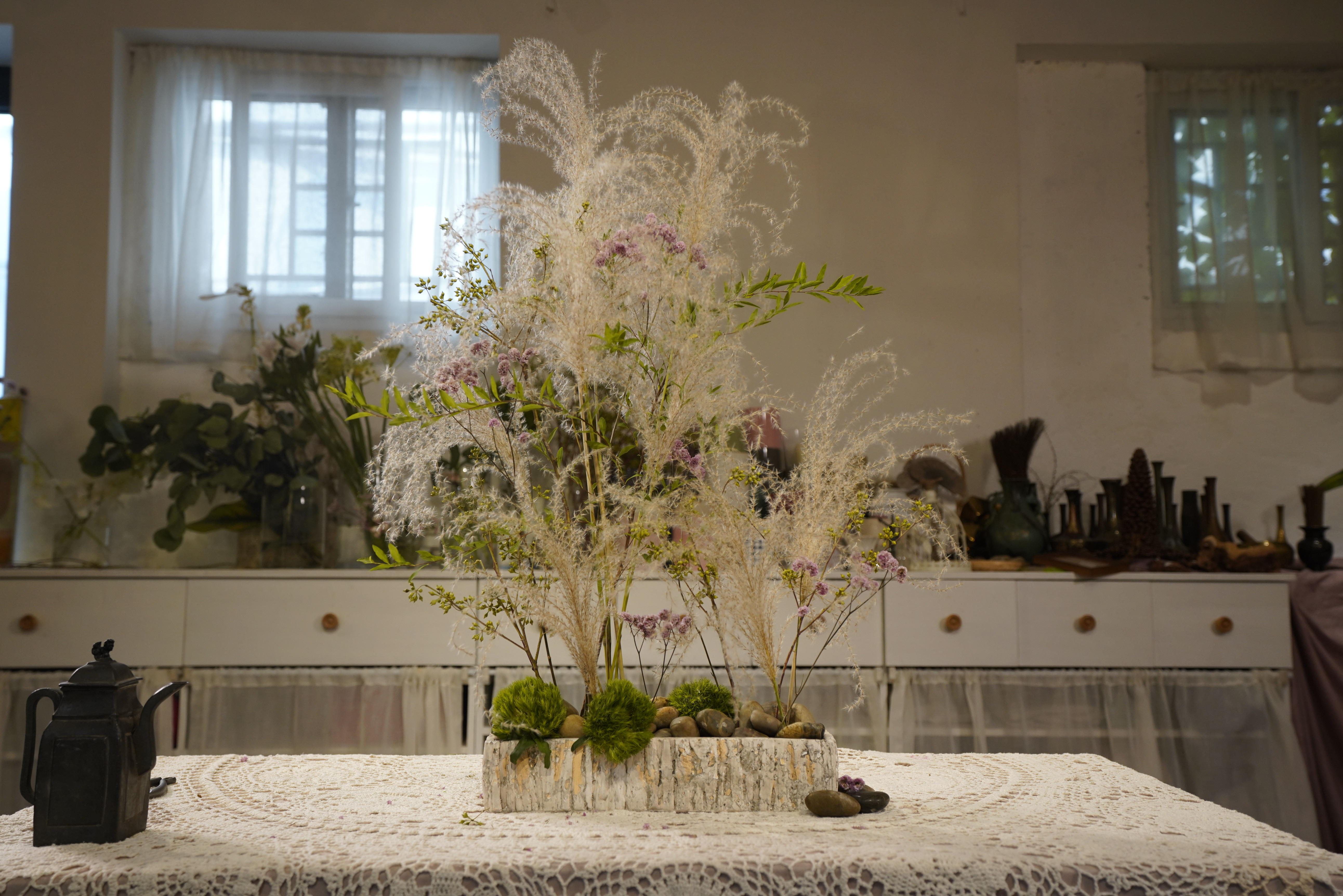02:31

The start of White Dew, or Bailu, the 15th of the 24 solar terms on lunar Chinese calendar, falls on September 8 this year. It means the weather is turning cold gradually and autumn has arrived.
During the period, while lunchtime is still hot, the temperature in the morning and at night drops dramatically. Before dawn and after sunset, the vapors in the air condense on the surface of grasses, flowers, and trees, into dew. It looks white and crystal clear, hence the name.
When many plants still burst in green, some start to turn their color into yellow and red. Flowers like chrysanthemum, verbena, and sweet olive come to full blossom.
In this episode of CGTN’s special program of floral design for 24 solar terms, six raw materials are used: common reed, swamp mahogany fruit, limonium-caspia, fontanesia, green trick, and cobblestone.

The six raw materials for the floral design are: Fontanesia (top L), limonium-caspia (top R), green trick (center L), swamp mahogany fruit (center R), common reed (bottom L), cobblestone (bottomn R). /CGTN Photo designed by Zhang Xuecheng
The six raw materials for the floral design are: Fontanesia (top L), limonium-caspia (top R), green trick (center L), swamp mahogany fruit (center R), common reed (bottom L), cobblestone (bottomn R). /CGTN Photo designed by Zhang Xuecheng
Those plants are not special to the White Dew season, but their cultural meanings are in accord with the ambiance of White Dew.
Fontanesia, for example, has full vitality during the early summer. But the shape of its leaves can match well with the beauty of dew. The swamp mahogany fruits, on the other hand, looks like dew if inverted, and is also a prelude for the upcoming harvest.
"The common reeds look pale and vast, while the white dew turn into frost." This is an ancient line from The Classic of Poetry, the oldest existing Chinese poetry collection. With the feather-like head, it looks fluffy, light, and warm.

The common reeds in a swamp. /VCG Photo
The common reeds in a swamp. /VCG Photo
As the major three materials are plain, the use of pink limonium-caspia is to add some bright colors to the final piece. It also gives out a sense of grace and softness of the early autumn.
The green trick and the cobblestone are designed to make the piece cuter and livelier. The green trick looks like moss from afar, but has more vitality. With a color of lime green, it symbolizes the short lingering of summer heat in this period.

The final floral design piece by Cherry Ran. /CGTN Photo
The final floral design piece by Cherry Ran. /CGTN Photo
During White Dew, which ends on September 22 this year, the climate turns dry, which could trigger coughing in certain people. For health, people eat longan and pears, which are mild and moisturizing according to Traditional Chinese Medicine theory. The two kinds of fruit and chrysanthemum are also preferred cooking ingredients during this period.
People also make wine with five kinds of crops including glutinous rice and sorghum. It tastes sweet and mild, and is called "Bailu rice wine."
Another tradition is drinking Bailu tea. The Bailu tea is a general name for all teas produced during the White Dew season, when the temperature turns mild and is optimal for the growing of tea trees. Bailu tea's taste is better than spring tea and summer tea. Spring tea is fresh and light, while summer tea is dry and bitter.
Reporter: Jiang Qingrui
Scriptwriter: Jiang Qingrui
Editor: Jiang Qiangrui
Copy editors: Liane Ferreira, Nadim Diab
Chief editors: Chen Ran, Wang Dewei
Cover image designer: Yu Peng
Videographers: Liang Si, Song Yawei
Video editor: Liang Si
Executive producer: Zhang Xiaohe
Producer: Si Nan
Supervisor: Zhang Shilei